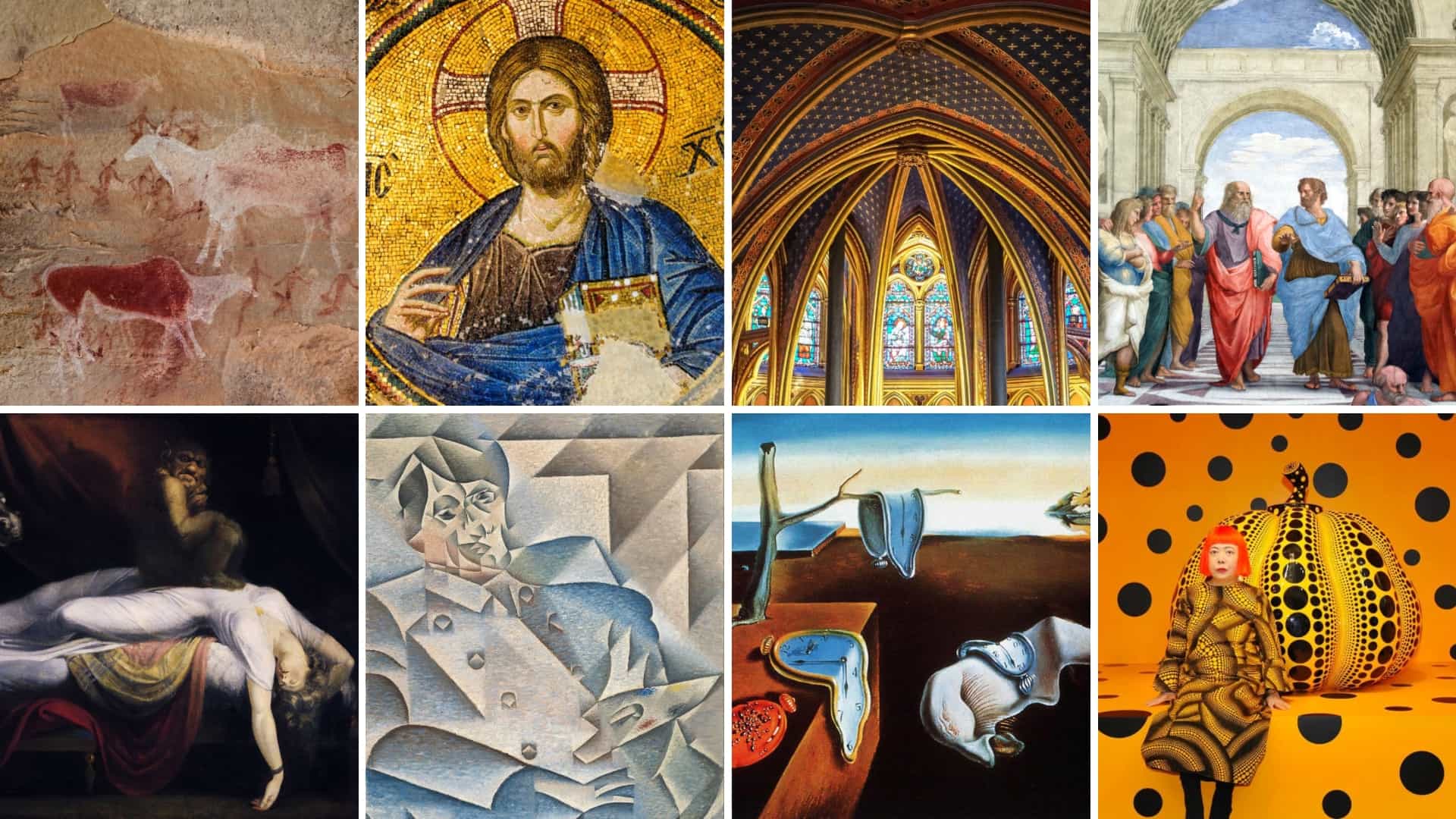The Evolution of Art

Art is a universal language that transcends boundaries, cultures, and time periods. It allows us to express our deepest emotions, tell stories, and capture the beauty of the world around us. From ancient cave paintings to modern digital masterpieces, the history of world art is a captivating tapestry woven by countless talented individuals. In this blog, we will embark on a journey through the diverse realms of world art, exploring different styles, periods, and the artists who have shaped the artistic landscape.
Ancient Art : Our journey begins with a glimpse into the ancient world, where art served as a means of communication, storytelling, and worship. From the awe- inspiring pyramids of Egypt to the intricate carvings of ancient Greece, civilizations throughout history have left behind a treasure trove of artistic wonders. Lets dive into the enigmatic world of cave paintings, Mesopotamian reliefs, and the iconic statues of ancient civilizations.
Renaissance and Baroque Art : The Renaissance period witnessed a rebirth of artistic expression, as artists sought to revive the classical ideals of ancient Greece and Rome. Painters like Leonardo da Vinci, Michelangelo, and Raphael created timeless masterpieces that celebrated human anatomy, perspective, and the beauty of the natural world. Moving into the Baroque era, artists like Caravaggio and Rembrandt pushed the boundaries of dramatic lighting, emotional intensity, and intricate details.
Impressionism and Post-Impressionism : The 19th century brought about a radical shift in artistic techniques and perspectives. Impressionist artists, such as Monet, Renoir, and Degas, challenged the traditional notions of representation by capturing fleeting moments, the play of light, and the essence of a scene rather than precise details. Post-Impressionists like Van Gogh and Cézanne further experimented with color, form, and personal expression, paving the way for the modern art movements of the 20th century.
Modern and Contemporary Art : The 20th century witnessed an explosion of artistic movements that challenged the conventional notions of art. From the abstract expressionism of artists like Jackson Pollock and Willem de Kooning to the surrealism of Salvador Dalí and the pop art of Andy Warhol, the boundaries of artistic expression were pushed to new limits. Contemporary art continues to evolve, incorporating new mediums, conceptual ideas, and social commentary.
Conclusion : The world of art is a vast and ever-evolving landscape that reflects the diversity, creativity, and aspirations of humanity. By exploring the different periods, styles, and artists that have shaped world art, we gain a deeper understanding of our shared cultural heritage and the power of artistic expression. So, let us continue to celebrate and appreciate the rich tapestry of world art, for it is through art that we connect, inspire, and provoke the imagination.